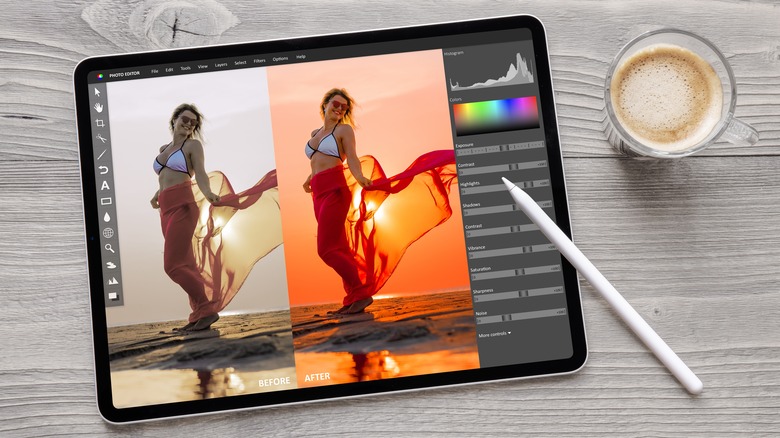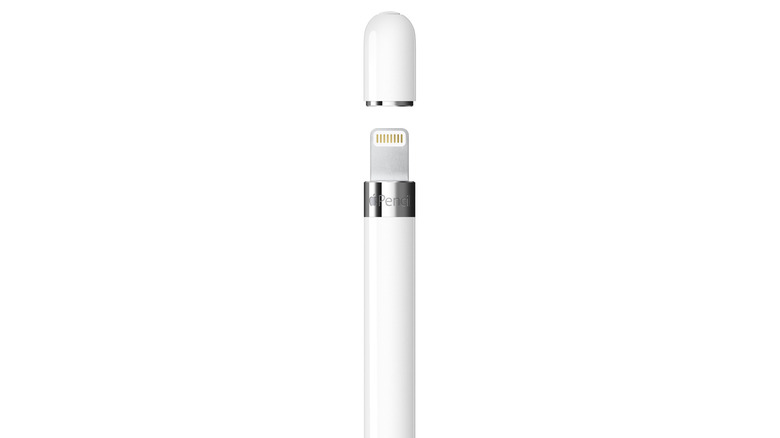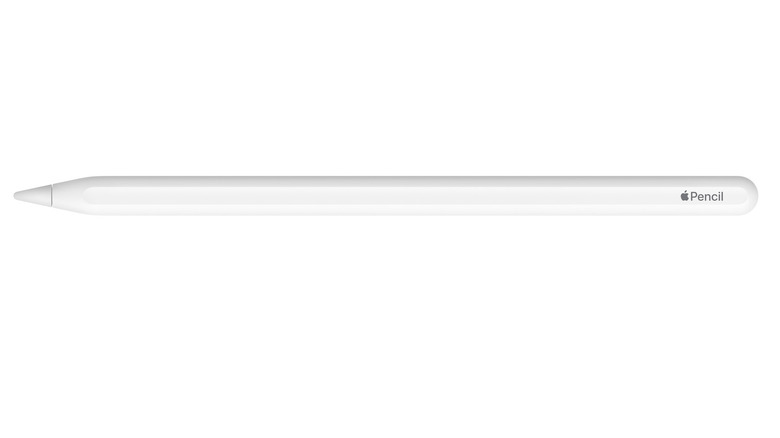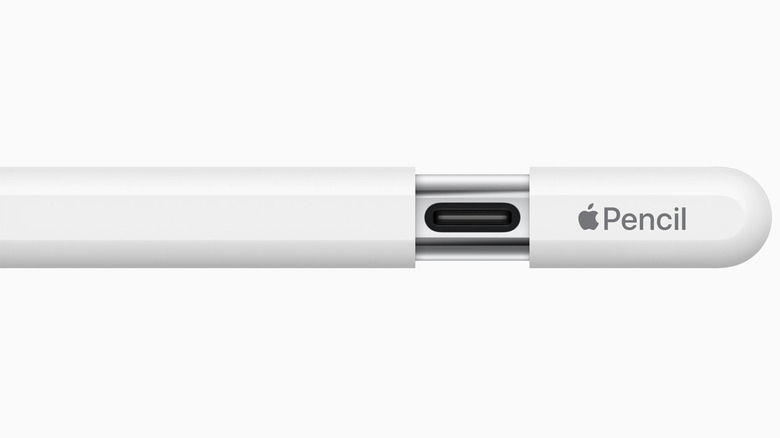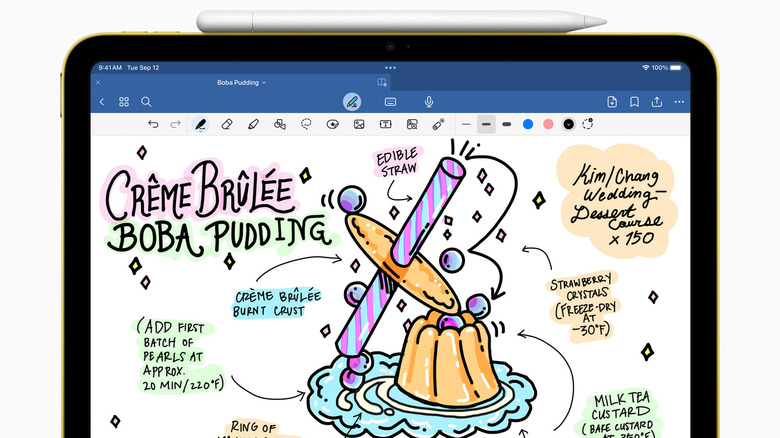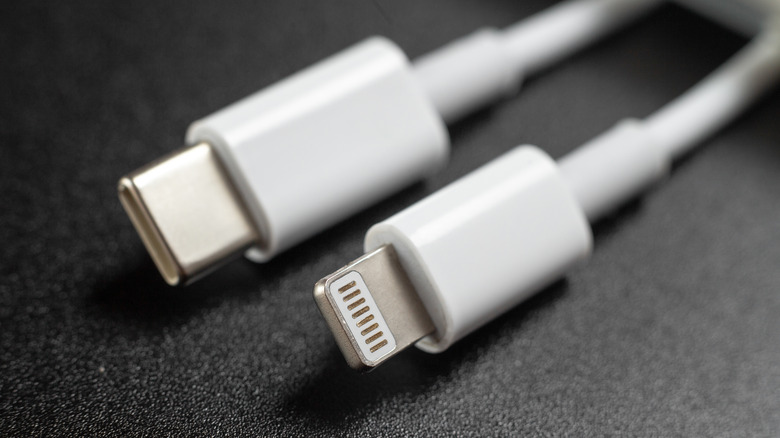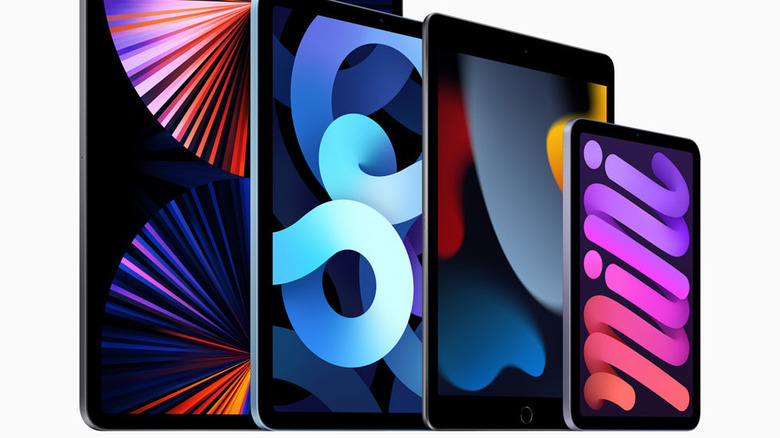Every Apple Pencil Compared: Key Differences To Know Before You Buy
A stylus can elevate your tablet experience by providing new ways to interact with your device. For example, you can use a stylus to draw, point, or take notes. Not all styluses are created equal, as evident by the Apple Pencil line of touchscreen pens.
When deciding which Apple Pencil to buy, there are a few things to consider. Compatibility is probably the most important thing to note, as each Apply stylus only works with a select list of devices. For example, the newly announced Apple Pencil (USB-C) is not compatible with older devices, and the original Apple Pencil is incompatible with newer iPads.
Charging compatibility also varies between devices, as the first generation uses a Lightning connector, the second generation uses wireless charging, and the new Apple Pencil utilizes USB-C charging. The features found on the different Apple Pencil devices also vary. Functions such as the ability to attach the stylus to an iPad magnetically are exclusive to the newest iteration and the second-generation model. On the other hand, unlike the new Apple Pencil (USB-C), the first and second-generation variants have a pressure sensitivity function.
It is important to note what features you want and which ones you can live without — the more features a device has, the higher the price.
First-generation Apple Pencil
The length of the original $100 Apple Pencil is 6.92 inches from tip to cap, sports a diameter of 0.35 inches, and weighs 0.73 ounces. The design of this stylus stands out from the Apple pack with its silver ring at the base of the device that features the Apple logo and name.
Above the ring is a magnetically attached cap that comes off to reveal the Lightning connector for pairing and charging. One of the downsides to this is if you are charging the device through your iPad, you can't charge the tablet simultaneously due to the port being occupied by the stylus. Once connected to an iPad, the first-generation Apple Pencil communicates with the tablet via Bluetooth.
Like all of the Apple Pencils, this model has a replaceable tip, and this first-generation device includes an extra tip in the box. It also includes a Lightning adapter and a USB-C to Apple Pencil Adapter.
Because this was Apple's first go at a stylus, this generation of Apple Pencil lacks some of the features available in later models. That said, it still comes with pixel precision, tilt sensitivity, and pressure sensitivity functionality.
Second-generation Apple Pencil
The $129 second Apple Pencil is shorter than the original, coming in at 6.53 inches in length. That shorter length is thanks to it ditching the Lightning plug and magnetic cap.
Instead of charging the device via Lightning cable, you must place it on the top of an iPad, where it will magnetically attach and charge wirelessly from the tablet. This allows you to charge both devices simultaneously and store the stylus when not in use. Another design change is this Apple Pencil has a flat edge instead of a round one, making it more akin to a traditional pencil. It also has a matte finish compared to the glossy finish of the first generation.
For features, the second-generation Apple Pencil has all the functions of its first-generation counterpart, including pressure and tilt sensitivity. A standout feature of this Pencil is its double-tap touch control. With this feature, you tap on the stylus twice in quick succession to switch between tools. This allows you to quickly switch between a drawing tool and an eraser, for example, without messing around with any menus.
The stylus also supports Apple Pencil Hover on iPad Pros, which previews what the stylus will write on the screen as you hover over the tablet. It also offers a free custom engraving that's visible next to the logo at the base of the stylus.
The new Apple Pencil (USB-C)
The newest iteration of the Apple Pencil is the most affordable yet, launching in early November for $79. The new stylus is even shorter than the second-generation Pencil at 6.10 inches in length. However, with its matte finish and flat side design, it looks similar to the second-generation model.
Although this device can attach to an iPad for storage, it does not charge. Instead, the device goes into a sleep state mode to save power when attached. You must charge the device via the USB-C port found under a sliding cap at the base of the stylus.
This iteration of the Apple Pencil features pixel-perfect precision, tilt sensitivity, and Apple Pencil Hover on certain devices. However, the new Apple Pencil sacrifices some features to hit the lowest price point among the other generations. For example, it does not have pressure sensitivity or the double-tap tool changing function from the second-generation Apple Pencil.
Pressure sensitivity vs. tilt sensitivity
The new Apple Pencil (USB-C) is the only model that does not have the pressure sensitivity function. Although this Apple Pencil feature has its use cases, it may not be a deal-breaker for everyone.
Using the pressure sensitivity of the first and second-generation Apple Pencils, users can alter what they are creating depending on how much pressure is being applied to the screen. With sketching apps like Procreate, users can make brush strokes thicker when they press harder on the screen, for example. The pressure range can also be adjusted for more refinement.
Tilt sensitivity is a feature that is standard on all Apple Pencils. An easy way to wrap your head around tilt sensitivity is to imagine how a real pencil works: If you tilt a pencil down to touch the side of the tip to a piece of paper instead of pointing it directly, the resulting markings will be a different tone. This is often used for shading, and it works the same with Apple Pencils, and can also be mapped to other effects.
Lightning vs USB-C
The biggest difference between Lightning and USB-C is compatibility. The Lightning connector in the first-generation Apple Pencil is only compatible with Apple devices. However, a USB-C to Apple Pencil Adapter is included in the bundle. Users can plug a male USB-C cord into the connector and insert the connector into the stylus.
This opens up how many devices can charge the stylus. However, the new Apple Pencil with its USB-C port does not need an adapter. This gives it more compatibility options by default, as USB-C is now the industry standard for electronics.
Although there is no word on the new USB-C Apple Pencil's charging specifications, it could potentially charge faster than the first generation. However, this depends on what type of USB interface it has. For example, if it has USB-3, it will have power support for 100W/3A. In contrast, the native Lightning connector only supports 12W/2.4A. It may be slower than Lightning if it uses an even older version of the USB interface, though that's not likely.
Apple Compatibility
Not all Apple Pencils will work with all iPads. To identify which iPad you have, check the model number on the back of your device.
The first-generation Apple Pencil is compatible with the sixth, seventh, eighth, and ninth-generation iPads. It can work with the 10th generation, but needs an adapter. It's also compatible with the 9.7, 10.5, and the first and second-generation 12.9-inch iPad Pro. Additionally, this stylus works with the fifth-generation iPad mini and the third-generation iPad Air.
Second-generation Apple Pencils are compatible with the iPad Pro 11-inch, first-generation and up; and the iPad Pro 12.9-inch, third generation and later. It is also compatible with the sixth-generation iPad mini, as well as any fourth generation and above iPad Air.
The new Apple Pencil (USB-C) is compatible with all iPads that have a USB-C port. This includes the first to fourth-generation 11-inch iPad Pro, as well as the third to sixth-generation iPad Pro 12.9-inch model. Additionally, it is compatible with the fourth and fifth-generation iPad Air, the 10th-generation iPad, and the sixth-generation iPad mini.
